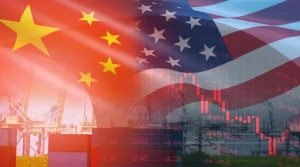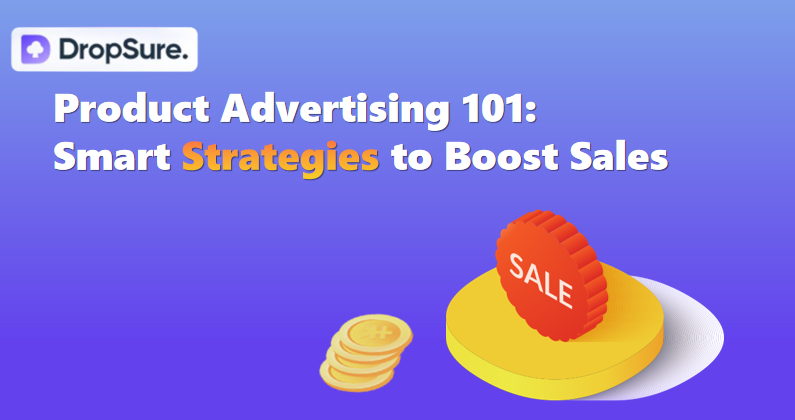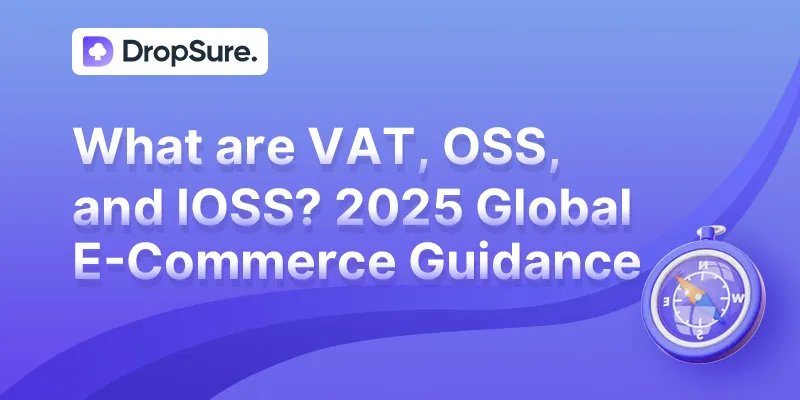
In the field of cross-border e-commerce, the Dropshipping model is highly favored by small and medium-sized sellers because of the advantages of “zero inventory” and low cost. However, the lifeblood of this model – international logistics and tariff policy – is in unprecedented turmoil due to frequent changes in the Trump administration.
In February 2025, the US tariff policy on small parcels from China was “changed on a dime”, which not only exposed the vulnerability of the global supply chain, but also sounded an alarm for Dropshipping practitioners relying on direct mail!
So, what should sellers do next to deal with such policy changes? Is there a way to avoid the risk? How to maintain competitiveness without being dragged down? This article will give you some advice.
Policy “Rollercoaster”: From Tax Increases to a 72-Hour Pause

Core Changes in Tariff Policy
February 1st: Trump signed an executive order to cancel the “minimum threshold” tariff exemption for Chinese packages under $800 in value and imposed a 10% tariff on Chinese goods.
February 7th: Due to a customs system breakdown and domestic pressure, Trump urgently halted the new policy, announcing the restoration of tax-free treatment until the U.S. establishes a “sufficient tariff processing system.”
Chain Reactions of Policy Impact
Logistics Breakdown: Within just three days of the new policy, over 1 million packages were backlogged at New York’s Kennedy Airport, forcing customs to release detained goods. The U.S. Postal Service even temporarily suspended receiving packages from China and Hong Kong, only to retract the decision within 24 hours.
Cost Surge: If the policy continues, the tariff cost per package may increase by 25%-30%, directly squeezing the profit margins of dropshipping sellers.

How to Stay Resilient in a Shifting Policy Landscape
Accurate Market Positioning: Stop Competing on Price Alone!
In the past, you might be able to take advantage of the Dropshipping field by relying on thin margins and low price competition. But now, in the face of rising tariffs and freight costs, the low price strategy may lead you to a dead end. What to do now? You need to figure out who your core customers really are, and then create unique products and services based on their needs.
You can try to segment the market, for example, if you sell suitcases, you may want to target the “female business travel” or “family travel” market segments, for their unique needs to launch the exclusive design. For example, don’t just settle for ordinary materials, try upgrading to more advanced materials, adding some practical features – such as waterproof, scratch-resistant, or make the case so lightweight that even walking can save energy. And don’t forget to keep up with the packaging and service, give consumers a personalized option, so they instantly recognize it’s your brand. In this way, it is no longer “price”, but really rely on the value of talking.
Optimize the Supply Chain: Cut Logistics Costs and Risks
We all know that logistics is the lifeblood of cross-border e-commerce, especially if you rely on the direct mail model, a policy change or logistics jam, the whole business may be like a fall like a big heel. Therefore, dear sellers, we have to give their supply chain to a “physical examination and upgrade”, so that it is more flexible and more resistant to blows.

Consider the layout of overseas warehouses! For example, you can try to use a third-party overseas warehouse, whether in the United States or Europe, so that your goods into the warehouse in advance, so that even if the policy came a sudden attack, you can also be stable delivery, without delaying the consumer shopping experience. Again, you can try a mixed shipping strategy: the explosive models are stocked in advance in overseas warehouses, and the others continue to use direct mail, so that you can reduce the financial pressure, but also improve the efficiency of logistics. There is also a great trick to find local suppliers. If your main market is in the United States, you may want to see if you can source from Mexico, Canada, etc., and skillfully bypass the high tariffs on Chinese goods. Finally, don’t forget to improve the efficiency of logistics tracking and customer service, so that consumers can always find out where the package is, so that even if you encounter delays, complaints can be reduced a lot.
Diversify Sales Channels: Don’t Put All Your Eggs in One Basket
All your orders come from the United States? Then you have to take it easy, after all, these days, the wind direction of the policy is faster than the weather changes, in case of a change in policy one day, your business may have to “cool”. Therefore, smart sellers will not put all the hope in a market, but will layout multiple markets, so that their business more resistant to blows.
Europe, Australia, Southeast Asia, Latin America, these markets are now growing, consumer power is not bad, you can strike while the iron is hot, study the shopping habits of these places, layout in advance. In addition to the market, the sales channel can not be a single, Shopify and eBay is good, but do not forget Walmart, Amazon, TikTok Shop these new platforms. Especially TikTok, short video + live with goods has made countless brands fire, if you do not seize this wave of dividends, it would be a pity! Consumers nowadays are more and more fond of “grass-roots” shopping, and short videos showing products + limited-time discounts are more attractive than traditional advertisements in minutes.
Therefore, do not let their business “alone”, multi-market, multi-platform is the king. In case of a market “overturned”, at least you can rely on other markets to carry, not directly out of business.
Adjust Pricing Strategy: Don’t Let Tariffs Eat Into Your Profits!
Tariffs went up, costs increased, profits shrunk …… Who can top this? But directly increase prices, but also afraid to scare away customers. Such a dilemma, of course, we have to think of a good way to crack.
First of all, you can appropriately share the cost of tariffs, do not pile all at once to the selling price, the freight slightly adjusted, or in the product to increase gifts, accessories, enhance the overall sense of value of the product, so that the price increase seems more reasonable. For example, you sell luggage, with a storage bag, luggage tags, so that consumers feel that “seems to be worth it”, so that the price increase will not be so abrupt.
Secondly, dynamic pricing strategy must be used. The market is alive, inventory is floating, competitors are also adjusting, how can you always keep a price unchanged? You can flexibly adjust the price according to market demand, logistics costs, and competitors’ pricing, so that you don’t lose money or scare away customers.
For another, packages and bundled sales are also a good move. Single sale of a product tax may be high, but if you bundle several products into a package, the overall unit price went up, the tax percentage of a single piece down. For example, you sell suitcases, you can match the same color of the organizer, toiletry bag, a whole set of travel equipment, directly improve the user’s desire to order, but also reduce the proportion of tariffs on a single product, two birds with one stone.
Therefore, the price is not a beast, the key is how to let consumers willingly pay, rather than a look at the price of “running faster than a rabbit”.
Leverage Technology: Boost Efficiency and Minimize Losses
Policies change every day, logistics is also a mess, if you still rely on traditional ways to manage orders, deal with after-sales, it is too “primitive”. Smart sellers have long used technology, not only to save time and effort, but also to significantly reduce the probability of error.
Now there are a lot of AI intelligent customs declaration system, according to the latest policy changes to automatically optimize the declaration, to avoid customs clearance, delays, and even fines due to incorrect information. Subscribing to the early warning services of the U.S. Customs, logistics companies, and cross-border e-commerce associations can also allow you to grasp the policy changes in the first time and make adjustments in advance, instead of waiting for the policy to fall before you start scrambling.
Besides, after-sales service, you can’t avoid logistics delays and tariff disputes, but if customer service is slow to respond and untimely to deal with them, consumers may directly give you a bad review or even a refund.AI customer service system can be a big help, automatically responding to frequently asked questions and dealing with order inquiries, so that your customer service doesn’t fall off the chain, and reduce the number of complaints and disputes brought by communication problems.
So don’t rely on manual Excel forms to manage your business, let technology run the process for you, and take the time you save to expand into new markets and make more money, doesn’t it smell good?
Build Your Brand: Don’t Be a “Nobody”
If you still rely on “low price to go volume” to live, sooner or later will be eliminated by the market. dropshipping sellers want to survive in the long term, must get rid of purely price competition mode, build their own brand, so that consumers are willing to pay for your brand, rather than just look at the price.
First of all, you have to have an official website of your own brand. Don’t just count on third-party platforms, build an independent station yourself, use SEO, social media, content marketing, and slowly make the brand influence. Social operation, email marketing, membership system, these can also be used, so that consumers have a sense of belonging, to cultivate their loyalty, so that they are willing to secondary re-purchase, rather than buy and go.

Again, don’t underestimate the power of packaging. A well-designed package with a warm thank-you letter may impress consumers more than a discount. If they feel that your brand has a “temperature”, not only will they repurchase, but also may help you spread word of mouth, which is much cheaper than burning advertising.
Therefore, do not think of going “short and quick” low price route, branding is the future. A real brand that consumers remember, not only can increase the premium space, but also allows you to stand more stable in the market competition.
Why Choose DropSure? Stability in a Shifting Dropshipping World
Of course, figuring it out on your own may take quite a detour, so you need a professional Dropshipping service platform to help you even more. And DropSure is just such a platform that can help you reduce costs and increase efficiency and minimize policy impact. It not only provides lower-cost supply chain solutions, but also more convenient logistics channels, and even customs compliance and real-time policy monitoring are all taken care of for you. In this way, you can not only reduce unnecessary expenditures, but also maintain a more stable operational rhythm in the uncertain market environment.
In the future of Dropshipping industry, it is not the fastest or cheapest who will win, but the one who knows how to adjust the strategy and control the risk the most. Join DropSure today and run your business more steadily and farther through uncertainty!

 12 min read
12 min read






